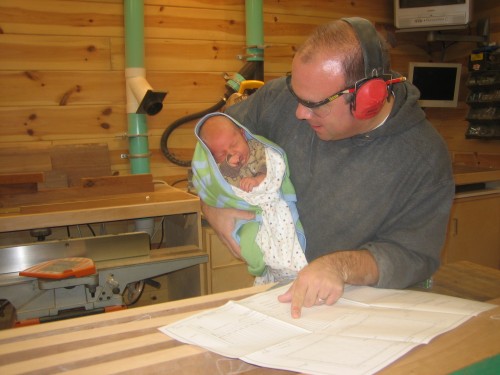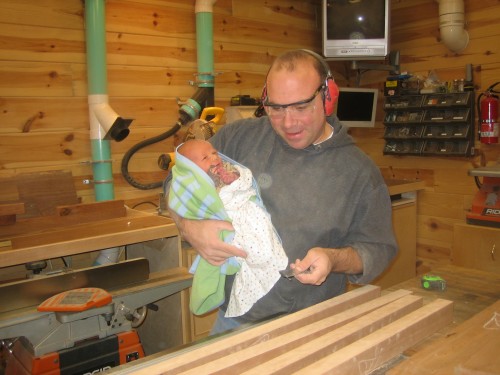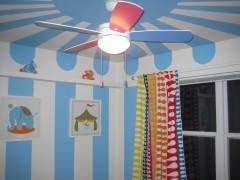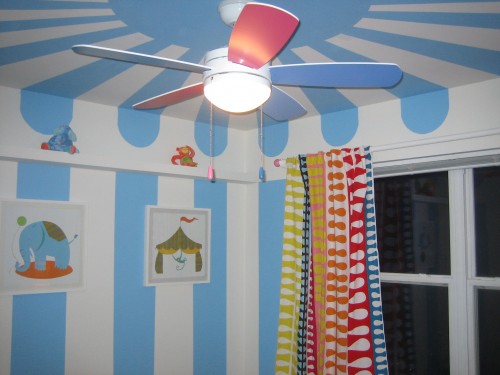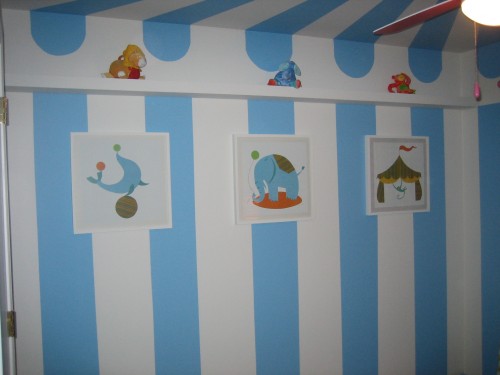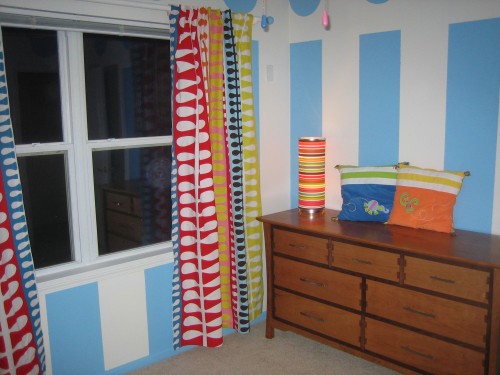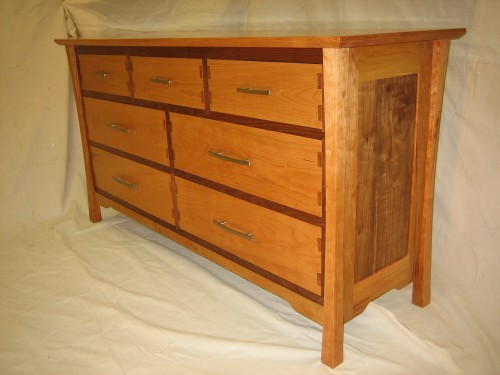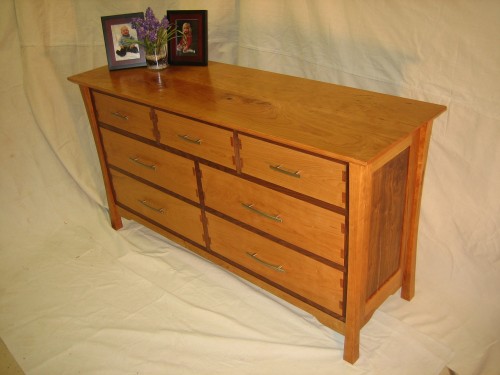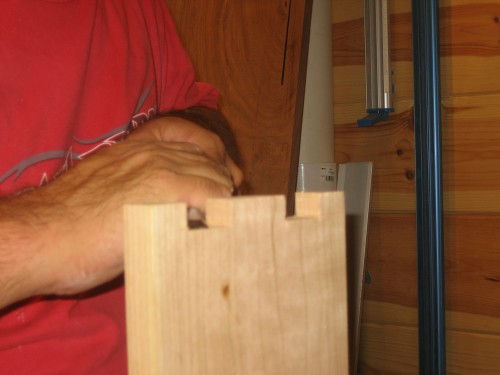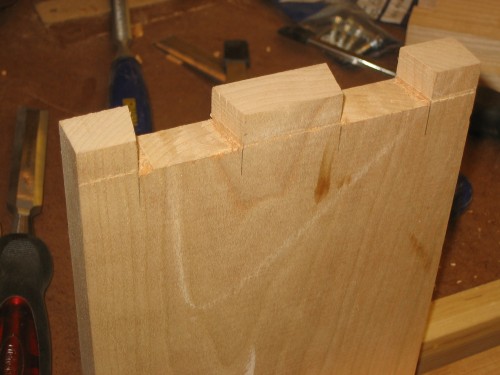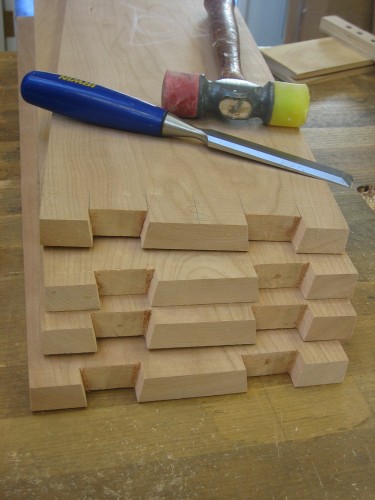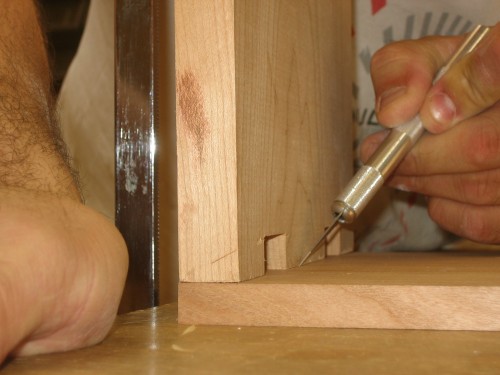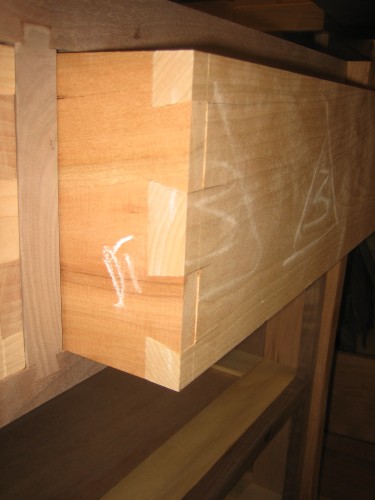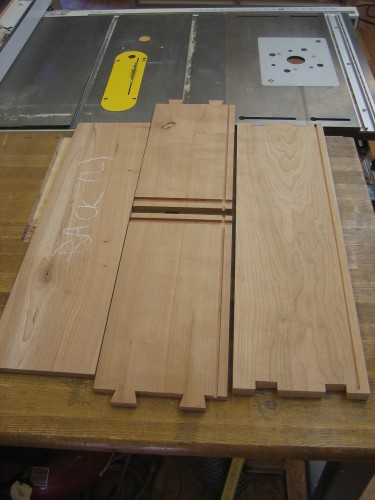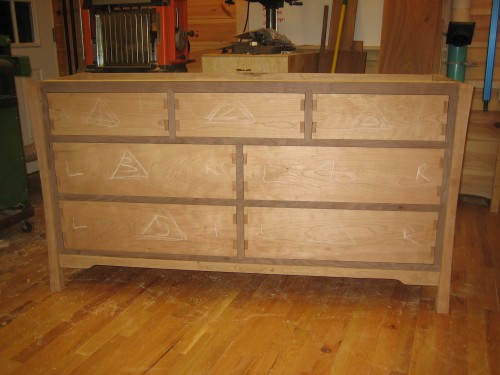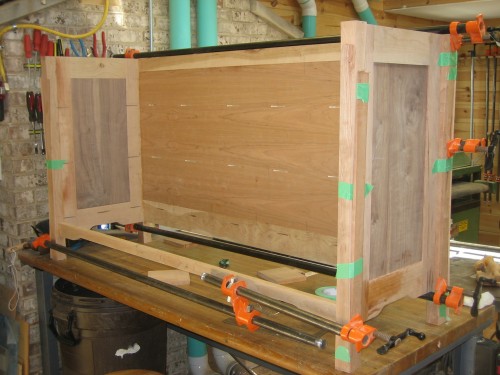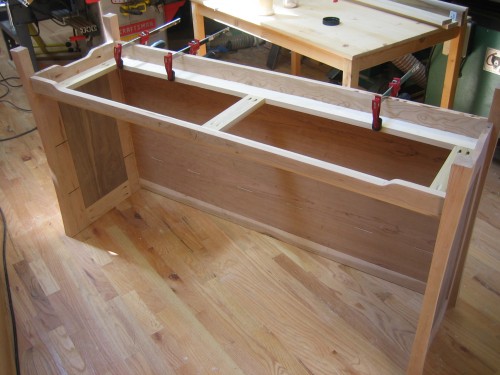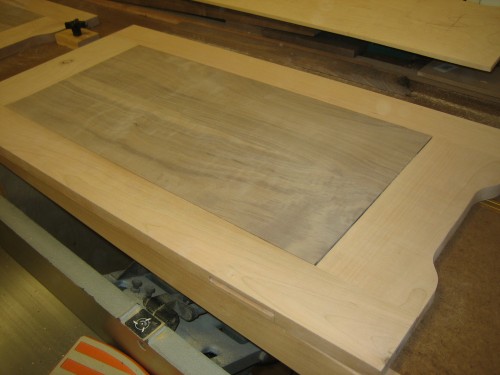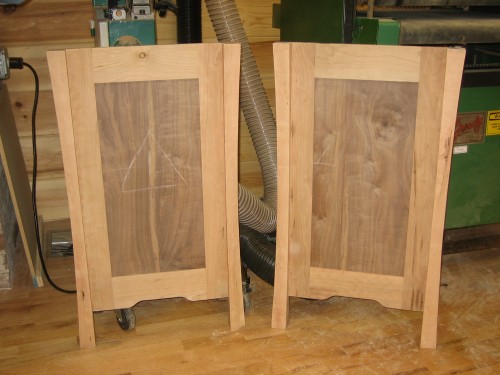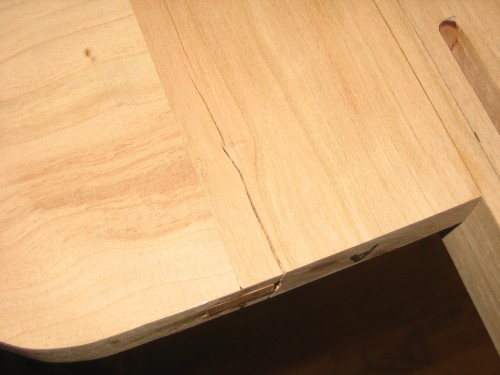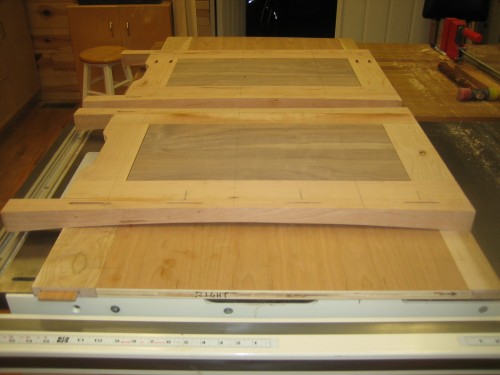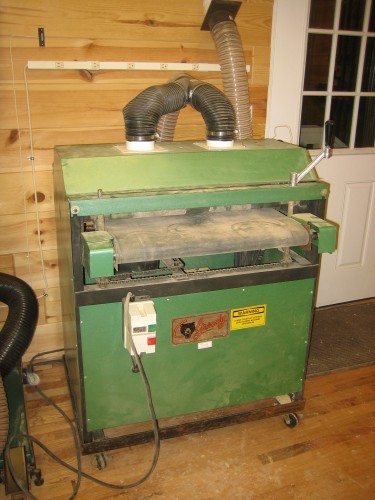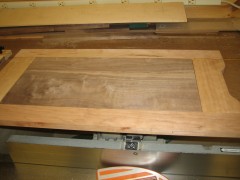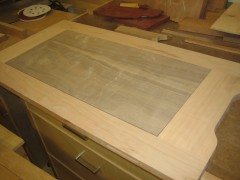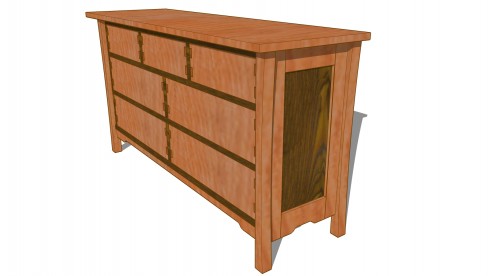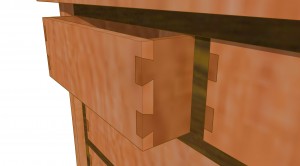I love my “new” drum sander.
I purchased the used machine for the purpose of sanding shop-cut veneers and inlay woods. However, with a 23-1/2″ capacity, it is capable of so much more. I first cut my teeth with this thing on the side panels. Now it was time to glue up the top — and I was really looking forward to seeing what it could do with the 21″ x 64″ x 1″ thick part.
Joining the top
I started by rough cutting and gluing up two 5/4 boards. Jointing an edge on these long, tall boards was a challenge on my 6-1/8″ Ridgid jointer’s 45″ table. One of the boards had a 1/4″ bow that simply couldn’t be removed on the short table, so I pin nailed it to a sacrificial scrap of 3/8″ plywood and ran it through the table saw.

It’s a “feature”
I had hand-selected three 5/4 cherry boards, nearly 80″ long for the top from Owl Hardwoods. The first one I chose was beautiful and featured numerous streaks/pitch pockets that I just love the look of in cherry furniture. Unfortunately I was unable to find a similarly figured board in the pile. The other two I selected were nice, but didn’t match the beauty of the first…I figured I’d sort it all out in the shop. Well…the time had come and my dilemma was that the beautiful piece was a poor match for either of the others, and the other two, while a better match for each other didn’t match the beauty of the first. After much consternation, and a determination that I simply couldn’t afford to go back to the lot to find its perfect mate, borrowing a term from software development, I decided that the mismatch should be a feature, not a bug.
I recall reading somewhere (maybe from David Marks?) that in a situation like this you should highlight the flaw…which has me now considering doing a simple inlay along the length of the joint. Perhaps in walnut and echoing the “cloud lift” (double, mirrored) from the front and side bottom apron? Or even something more “organic” (a river runs through it?).
Any opinions on that?
Dead Flat
Once the glue dried, I scraped and then planed the joint relatively flat and prepared to see how well the old Grizzly would handle the large piece. It took a bit of work just to place the machine in the room with >6′ of clearance on either side in my small shop…but in the end, I found the space. Since I was using nearly the full capacity of the sander, I was very nervous that it’d track a bit too far to either side and somehow ruin either the piece or the machine or both. While I did manage to brush up against the duct tape on one pass — resulting in the need to stop and re-secure the paper, I didn’t experience any significant issues. The front roller’s 100 grit paper loaded up enough to require replacement part way through the process, and I did notice some loading that I was unable to completely clean up on the edges, but overall this was an extremely satisfying experience with no burns or noticeable snipe and resulted in an absolutely dead flat top! Awesome!
My only issue was with the dust collection — for smaller pieces like the side panels, the collection was absolutely sufficient. However, with this piece, while there weren’t great clouds of dust or anything like that, I did wind up with a thin film of dust covering all of the shop surfaces. Prior to this, per a fellow LumberJock‘s recommendation, I had replaced the flexible hose that came with the sander with rigid PVC. I’m sure this helped, but it still couldn’t quite keep up.
After sanding, I routed a bevel around the bottom edge with a plunge router.

Winding down the build phase
Finally, I installed some small stop blocks on the dust panels behind the drawer fronts to prevent them from recessing too far into the carcass and some “tip blocks” at the top corners so the drawers won’t dip significantly when fully extended.


Next up: Inlaying the top(?) and then sanding, sanding, sanding and more sanding!


